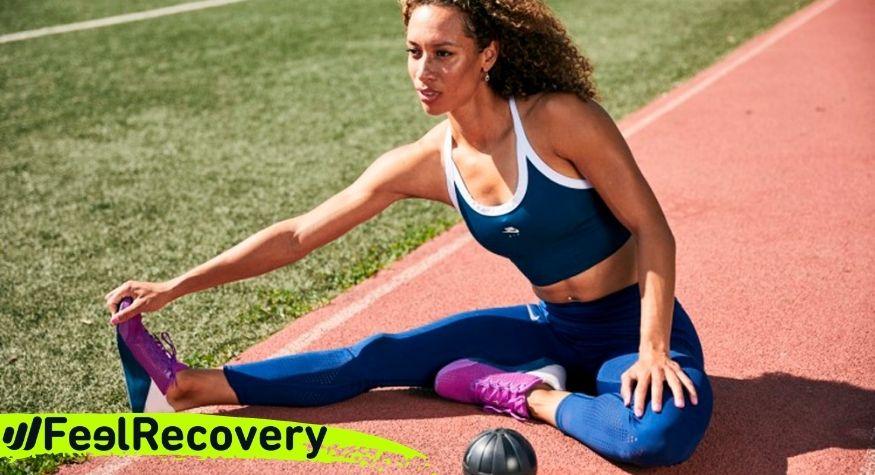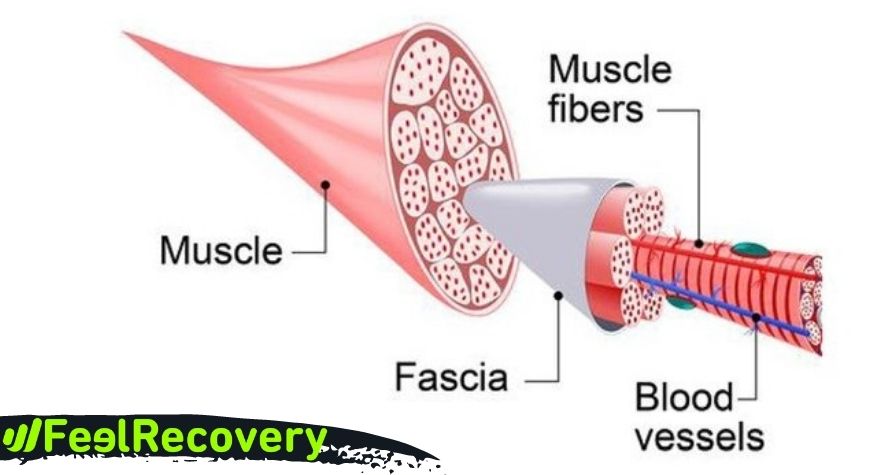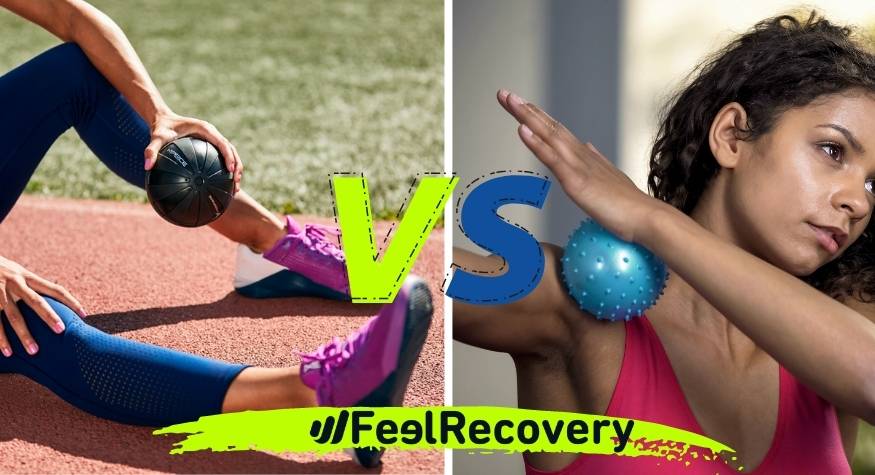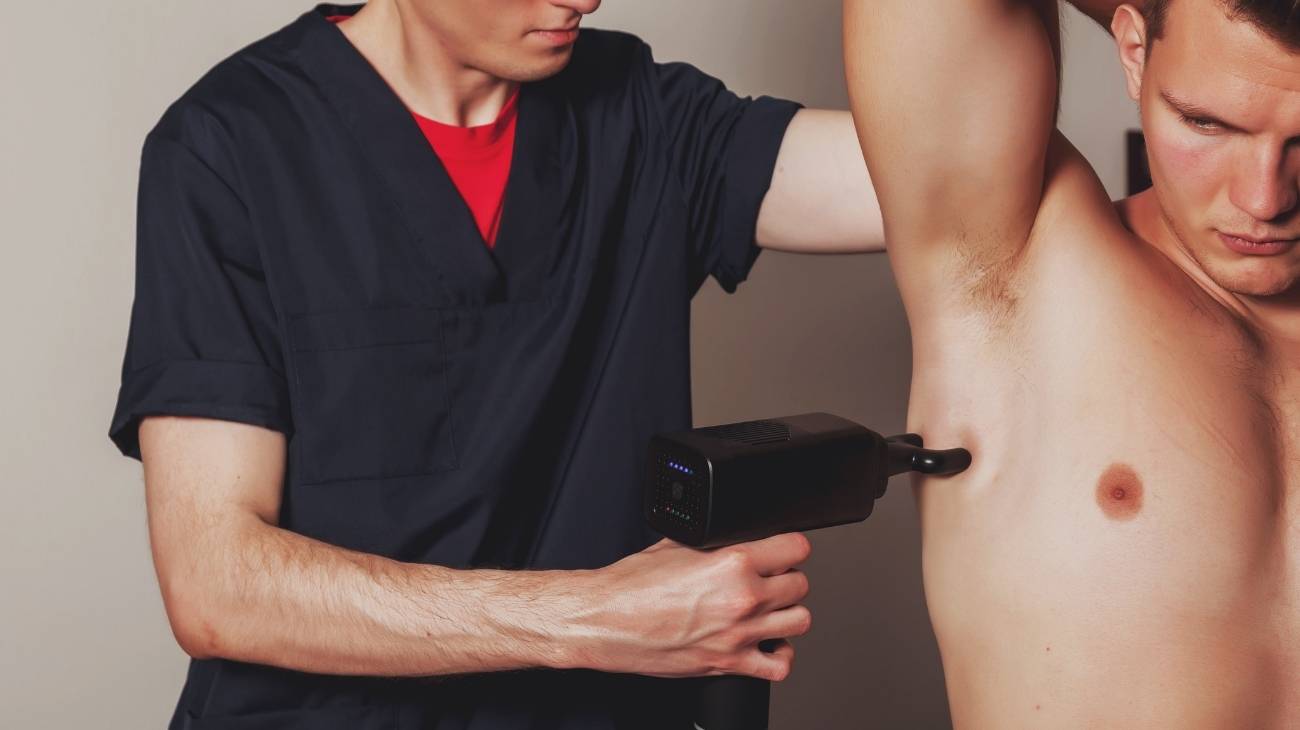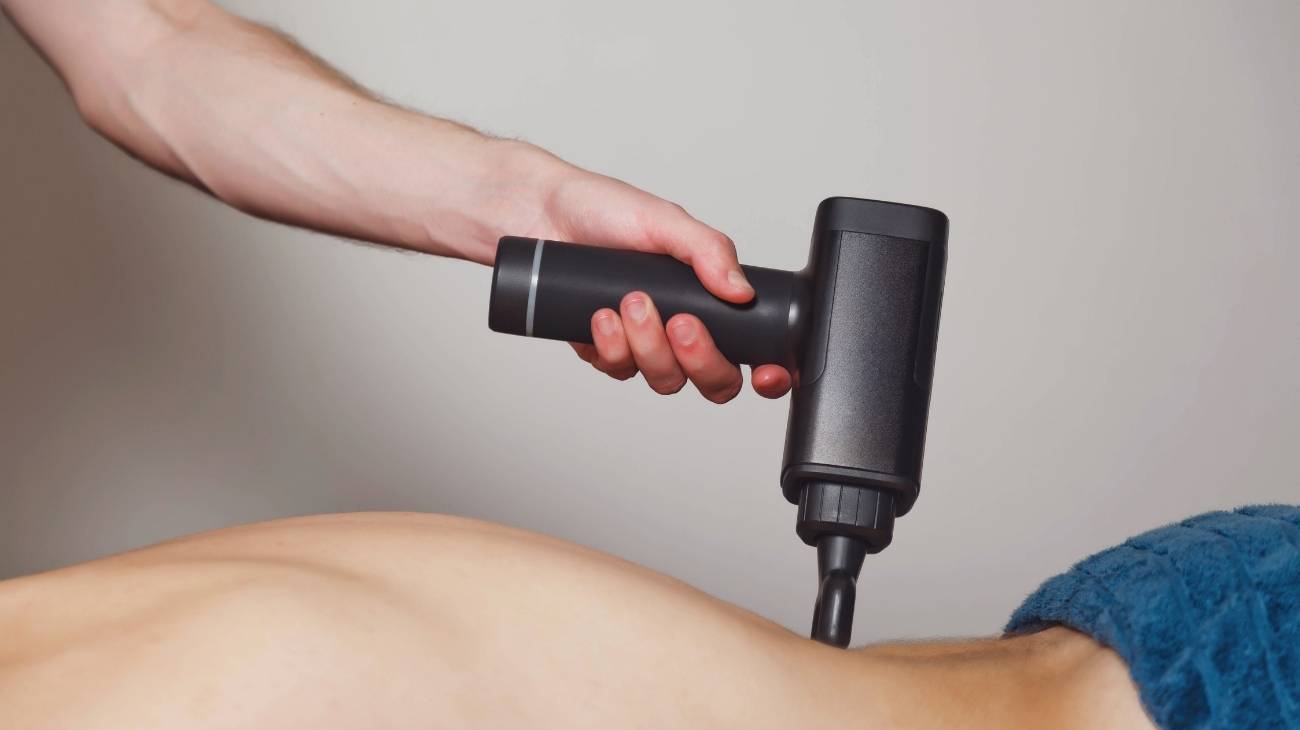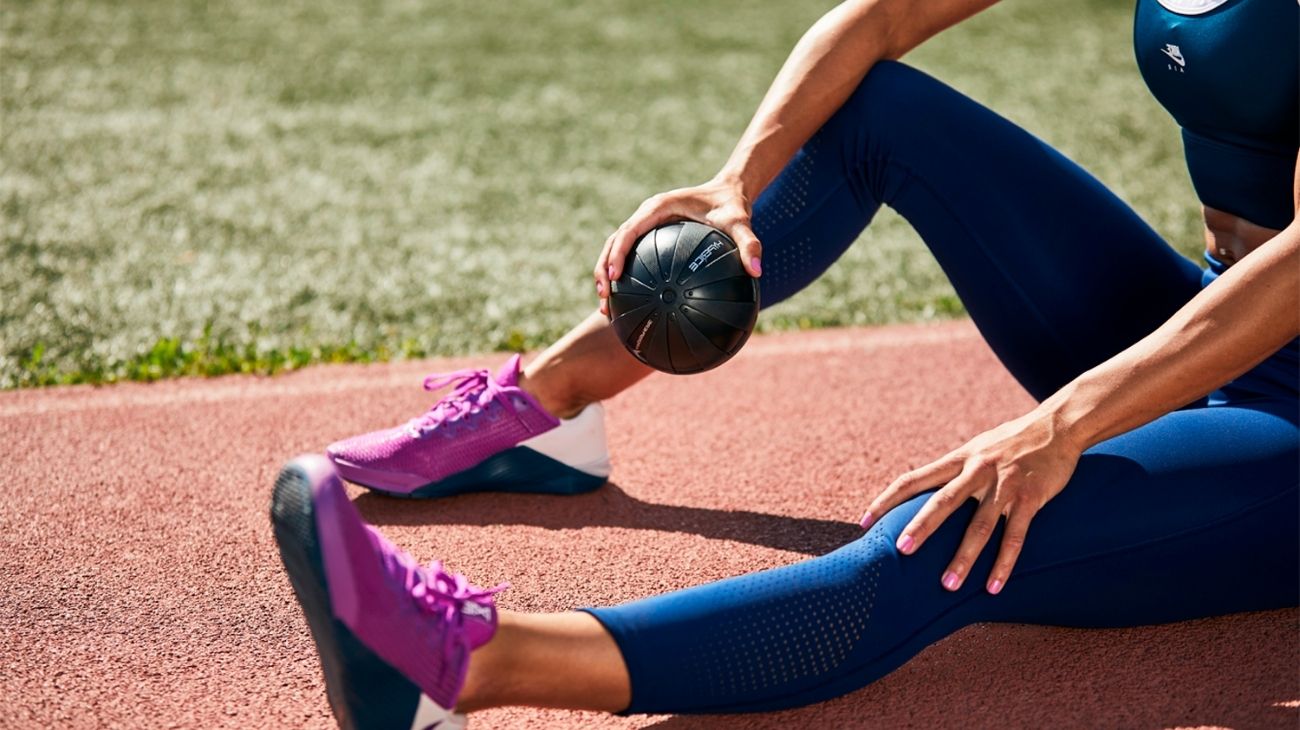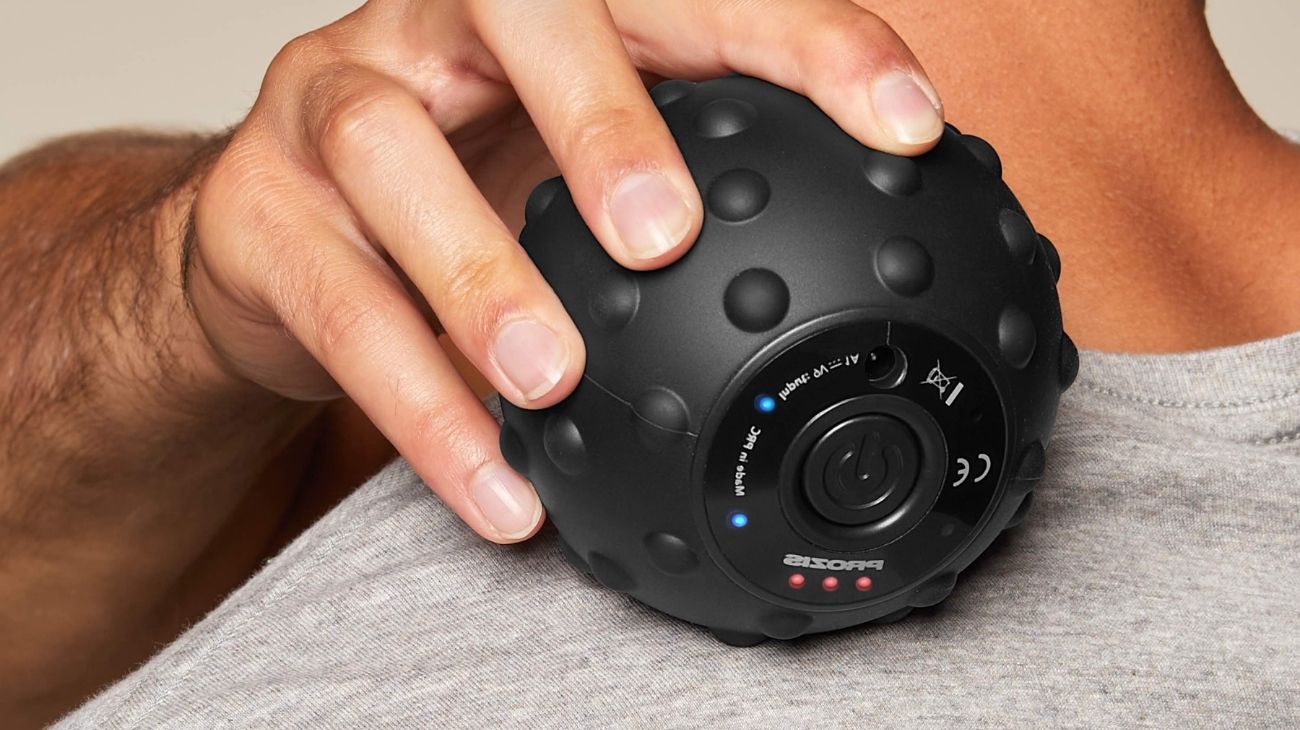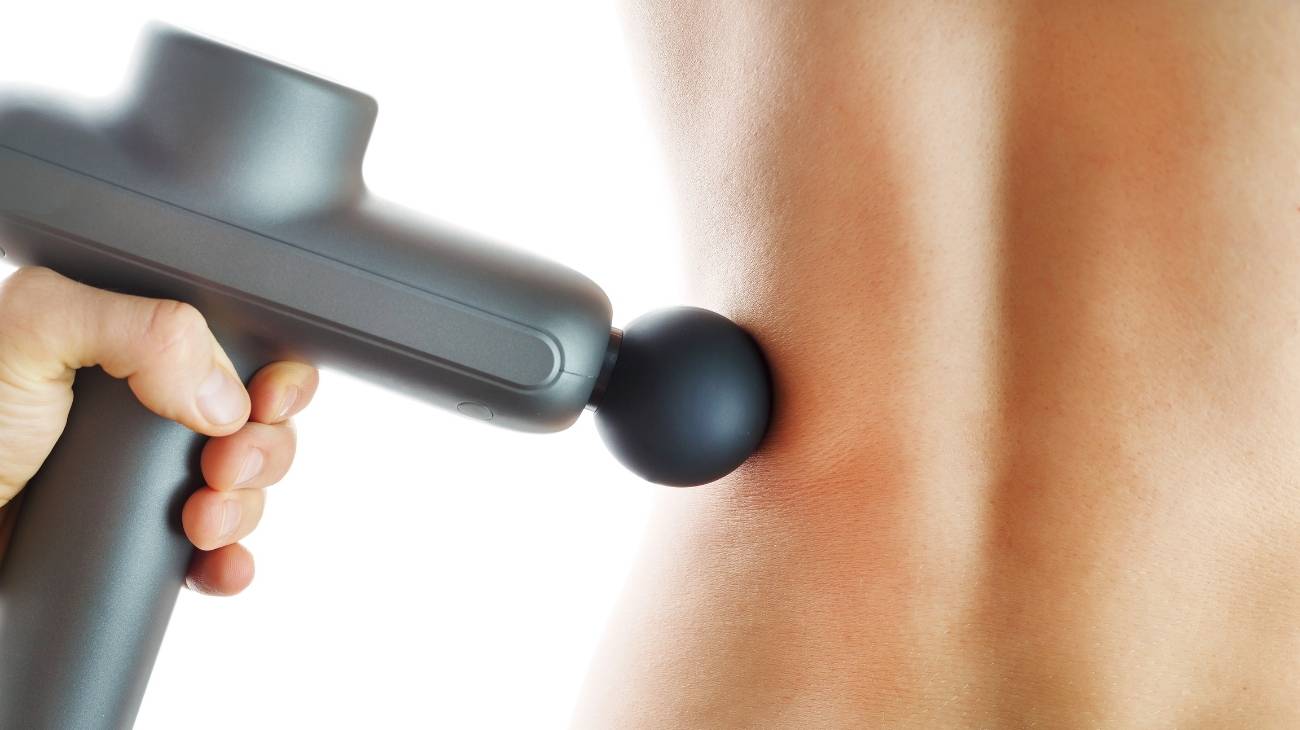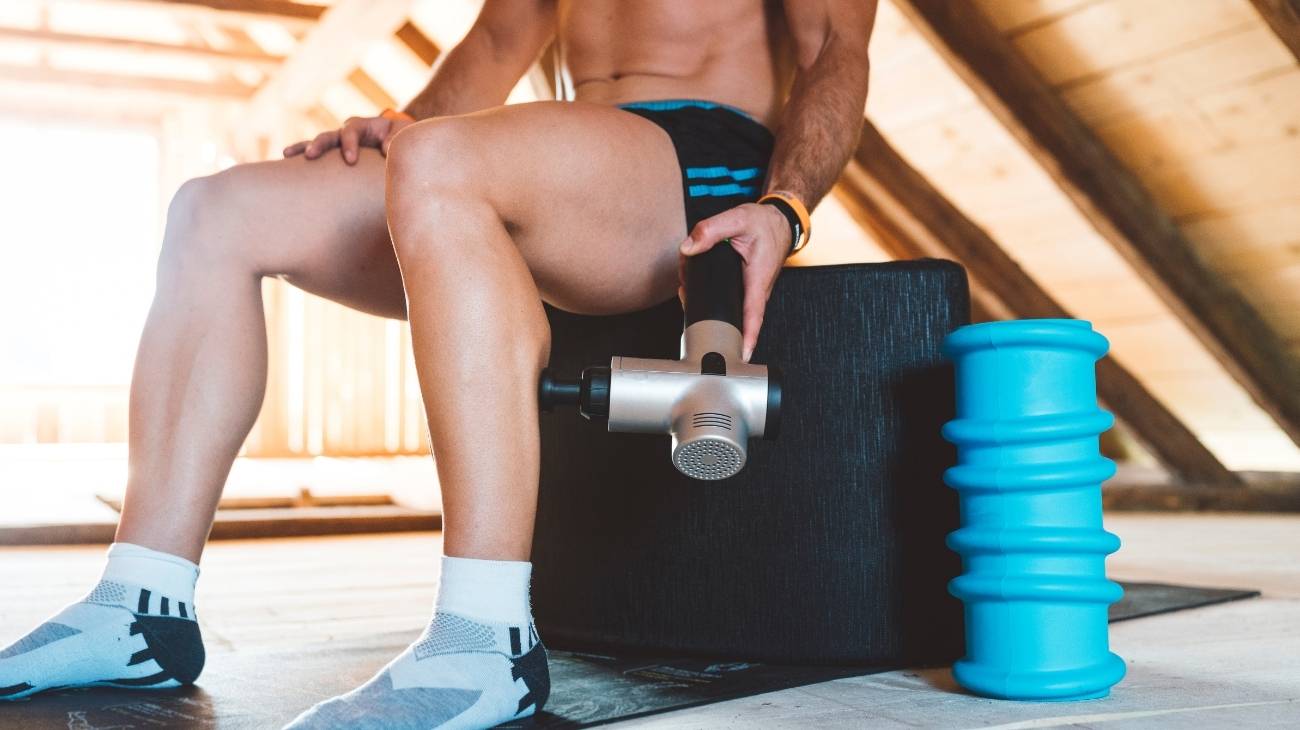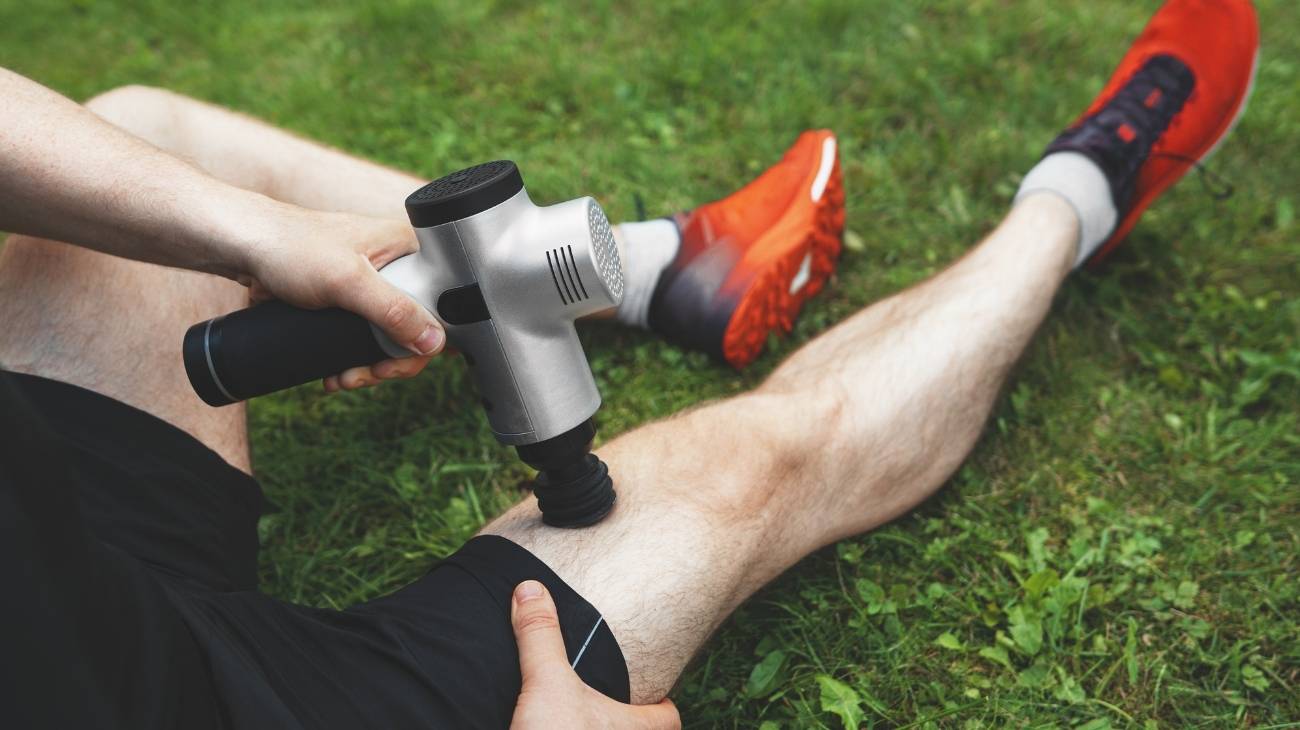- What is vibration therapy and what types of ailments can be treated with vibration balls?
- What is myofascial release therapy and what kind of ailments can be treated with massage balls?
- What are the differences between vibrating massage balls and myofascial massage balls?
- What are the main alternatives to vibrating and manual massage balls for pain relief?
Massages with vibrating balls and myofascial massage balls are one of the most widely used products in the world of sports and physiotherapy. Those who experiment with these balls claim that they receive similar benefits to a professional massage, which is why they use the balls as the perfect complement to their training sessions.
With both products, myofascial release is achieved, however, the vibrating massage balls appeal to two types of users: those who seek more stimulation with permanent benefits and those who just want general physical relaxation. In this article you will find everything you need to know about myofascial release with the use of vibration balls.
What is vibration therapy and what types of ailments can be treated with vibration balls?
In Europe, 80% of people regularly use a massage product to improve their lifestyle. Stimulating balls are on this list of the most commonly used mechanisms.
These are mechanical, vibratory or frictional movements that generate a series of chemical and physical reactions to relieve ailments associated with minor injuries and soft tissue, so the first thing to know is that not all pain can be treated with massage.
Half of the efficiency of massages depends on the application that people make and the other half depends on the quality of the product, because a ball of dubious manufacture does not offer sufficient pressure on the body, rather it can leave damage in the tissues.
Here are some conditions you can treat with massage balls:
- Contracture injuries: massaging increases the amount of mitochondria in the body, which are components that serve as a source of energy for cellular activity. Muscle recovery is achieved by the ability of the cells to multiply and replace damaged or dead cells during physical activity.
- Headaches: provided that the origin of the headache is due to muscle injuries in the neck and shoulders, headache relief is possible when the headache is mild and moderate. Only the sufferer can know the origin of the headache by assessing whether there is tension in the neck or whether it is a process of stress that leaves stiffness.
- Tendonitis: there are injuries such as Achilles tendinitis that can be treated with a good massage, but care must be taken with the pressure applied to these tissues as over-stimulation is not desired. In these cases, it is more advisable to use electric balls, which first prepare the tissue with uniform vibrations.
- Dorsalgia or back pain: the dorsal muscles in the back are resistant and difficult to access, which is why physiotherapists prefer to use massaging balls rather than other products such as the Foam Roller, because their small shape stimulates these muscle groups better than the elongated shape of foam rollers.
- Cervicalgia or neck pain: electric and classic balls are safe products if you wish to stimulate the nape of the neck, where the cervical vertebrae are located, without any risk of unnecessary compression of the nerves, nor do they alter the integrity of the vertebral discs.
- Muscle nodules: Nodules and trigger points are the same type of injury, but nodules generate localised pain and trigger points generate pain in other parts of the body that are connected. In both cases, the massaging balls are used to reduce excessive tension and palpable lumps in the skin.
- Whiplash: There are complex injuries to treat such as cervical sprains, but it is possible with the guidance of a physiotherapist. If you apply inappropriate pressure, there is likely to be a major muscle contraction. This is an injury that requires the assistance of a professional, although the balls can be used by any type of user at home.
What is myofascial release therapy and what kind of ailments can be treated with massage balls?
Although muscles and fasciae are closely connected, sometimes people only require occasional myofascial release, a benefit that is obtained when you perform routines with Lacrosse or spiked massage balls, but without the need to resort to vibrations.
Fascia allows for functional balance, so massage restores the lost balance that tends to leave stiffness and difficulties in muscle movement. People even feel intense pain and a sensation of being held back. This is a tissue that covers all parts of the body like a second skin, even the membrane covers the muscle fibres.
Check out some of the injuries that can be treated with myofascial release:
- Myofascial pain syndrome: this is caused by the presence of trigger points which, as well as affecting muscle function, also leaves excessive tensions in the fascial tissue. There should always be professional guidance to treat this condition, but it can be reinforced at home with therapies.
- Postural problems: there are trigger points that are not as pronounced or painful, but they alter the body's natural posture, which triggers a whole series of musculoskeletal alterations that leave additional ailments in people, such as lumbar and cervical pain.
- Repetition fatigue: in sports such as cycling and running, some parts of the body are more fascially demanding than others. The legs, for example, tend to have a higher stress load and the fascia is often weakened. Massage will help to maintain the elasticity of this tissue.
- Stretching: as in the muscles, the fascia suffers from constant and excessive stretching of its tissue when people move during sports or sudden physical activities. When massages are performed constantly, the integrity of the fascia is protected and must be healthy to allow better movements.
- Plantar fasciitis: if you are not an athlete, the plantar fascia can also become irritated and inflamed due to an overload of tension on it and in addition to the body weight. It is usually a simple pathology to treat with the massaging balls, you only need to "step on" the product and make short glides, it would even be enough to turn on the vibrations for a few seconds.
- Conditions such as thyroid and psoriasis: many people look to the massaging balls as a form of prevention against these diseases. When there is a family history, specialists recommend the use of myofascial massages to delay or prevent the onset of these ailments.
What are the differences between vibrating massage balls and myofascial massage balls?
Although we have given some clues about the differences between vibrating balls and conventional balls, you should know more about the characteristics of each of them.
Type of therapy
All types of massage, of which there are more than 80% in the world, have a positive impact on the muscular and myofascial structure. However, you should know that massage balls apply two forms of stimulation:
- Vibration massage: this is a stimulation that best treats body tensions due to stress and problems in the functioning of the fascia in a superficial way. The micro movements of these devices break up knots and improve elasticity.
- Friction massage: this is one of the most widely used types of massage since the force of the hands was used to relax the tissues. Nowadays, there are devices such as massage balls and rollers with which you perform slow and deep glides.
With both balls a myofascial release is achieved with friction, but only with electric balls a stimulation by vibration is obtained, which is why it is usually more sought after by people whose lives are stressful and require moments of relaxation.
How to use
With both products you can make slides. You just have to detect the area where there is the most pain or myofascial tension and learn the types of routines you can do.
Do you require a single or double load? How long does a session last? How often should you massage? All these doubts should be clarified with the support of a physiotherapist, especially when there are complex injuries such as low back pain and there are likely to be complications when a therapy is misapplied.
To enjoy the vibrations, you can do the same movement routines, but with the vibration on, which will add to the benefits offered by this type of product. However, you can use your hands to place the vibrating ball where there is the most muscle tension, which will allow for better relaxation.
Effectiveness of the massage
As they are similar, almost identical products, the benefits and effectiveness of the stimulations are the same and immediate. The discipline and constancy of the sessions will make the relief permanent.
Several studies claim that the use of massage balls helps to control pain and eliminate myofascial stiffness, as short-term benefits. However, when people have a habit of use, the benefits expand to improve joint mobility and care for flexibility and elasticity of tissues.
Ailments to be treated
Although we have talked about regulating the intensity of pain and treating some muscular injuries, there are certain limits that should not be exceeded. It should be noted that no massaging device will replace the efficiency of expert hands, nor will it be a substitute for medical assessments.
However, when constant care is desired, it should be emphasised that the injuries being treated are minor and soft tissue injuries. Therefore, there are specific diseases and injuries that also cause muscle pain and discomfort, but should not be treated with myofascial massage.
Contraindications
If you want to become a professional in the use of these massage balls, you should start by knowing the existing and proven contraindications, which are cases in which it is not advisable to perform myofascial massages.
- In the first three months of pregnancy.
- In case of diabetes.
- In case of taking drugs such as corticoids.
- In case of fractures, sprains or dislocations.
- Immediately after an injury.
- In case of skin infections and fungus.
- In case of severe vascular problems.
- In case of chronic pain and inflammation.
There are relative situations, such as pregnancy, which must be monitored by a specialist. There are pains and inflammations that can be treated, as long as they have the approval of an obstetrician-gynecologist.
Price
The price of these products varies according to functionality, materials and presentation. For example, the most affordable is to buy a single Lacrosse-type massage ball, but it is not the most convenient.
When you get a pack of massage balls, it comes with several balls of different sizes, hardnesses and textures, which allows for a greater variety of massages. So you can start with gentle pressure and then move on to deeper stimulation.
However, the most expensive product is the vibrating ball, which has several levels of intensity, is made of ABS plastic that is resistant to shock and pressure and is hypoallergenic, so there will be no allergic reactions.
What are the main alternatives to vibrating and manual massage balls for pain relief?
In addition to vibrating balls, you should know what other alternatives you have at your fingertips to offer relief for different muscular ailments:
- Foam Roller: is one of the most requested options because it allows deep muscle relaxation, myofascial release and protects tendons and ligaments from muscle deficiencies.
- Muscle massager gun: This product specialises in soothing intense muscular pain and relaxes trigger points that are created in deep areas such as the thighs and back. Use should be brief when high intensities are applied.
- Acupressure mat: Although it does not use friction or vibrations, the mat allows for body relaxation by stimulating the circulatory system and the lymphatic system. It is widely used by yoga and pilates practitioners because it magnifies the benefits.
- Neck and shoulder massagers: these use friction by means of rotating heads, they also apply thermotherapy to stimulate cell multiplication and the production of endorphins.
- Foot massagers: these are better options for relieving inflammation and pain in the feet than ball massagers. They combine several types of massage to increase the benefits.
- Hook massager: one of the oldest manual massagers, it only requires the strength of the hands and the stimulating tips to untangle the knots formed by overwork.

